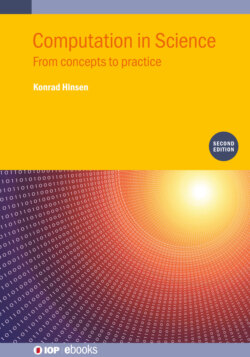Читать книгу Computation in Science (Second Edition) - Konrad Hinsen - Страница 13
На сайте Литреса книга снята с продажи.
Computation for understanding
ОглавлениеRichard Feynman had written on his blackboard: ‘What I cannot create, I do not understand.’ We cannot understand a theory, a model, or an approximation, unless we have done something with it. One way to gain experience with mathematical models is to apply them to concrete situations. Another one, even more powerful, is to implement them as computer programs. Donald Knuth has expressed this very succinctly [4]:
It has often been said that a person does not really understand something until he teaches it to someone else. Actually a person does not really understand something until he can teach it to a computer, i.e. express it as an algorithm. The attempt to formalize things as algorithms leads to a much deeper understanding than if we simply try to comprehend things in the traditional way.
The utility of writing programs for understanding scientific concepts and mathematical models comes from the extreme rigor and precision required in programming. Communication between humans relies on shared knowledge, starting with the definition of the words of everyday language. A typical scientific article assumes the reader to have significant specialist knowledge in science and mathematics. Even a mathematical proof, probably the most precise kind of statement in the scientific literature, assumes many definitions and theorems to be known by the reader, without even providing a list of them. A computer has no such prior knowledge. We must communicate with a computer in a formal language which is precisely defined, i.e. there are clear rules, verifiable by a computer, that define what is and what isn’t a valid expression in the language. Every aspect of our science that somehow impacts a computed result must be expressed in this formal language in order to obtain a working computer program.
Another reason why writing a program is often useful for understanding a mathematical model is that an algorithm is necessarily constructive. In the physical sciences, most theories take the form of differential equations. These equations fully define their solutions, and are also useful for reasoning about their general properties, but provide no obvious way of finding one. Writing a computer program requires, first of all, to think about what this program does, and then about how it should go about this.
Implementing a scientific model as a computer program also has the advantage that, as a bonus, you get a tool for exploring the consequences of the model for simple applications. Computer-aided exploration is another good way to gain a better understanding of a scientific model (see [5, 6] for some outstanding examples). In the study of complex systems, with models that are directly formulated as algorithms, computational exploration is often the only approach to gaining scientific insight [7].
